Versuchen GOLD - Frei
And Breathe... Rocherpan Nature Reserve
African Birdlife
|January - February 2021
After the pandemic’s catastrophic impact on travel and finances, everyone has been constrained to look closer to home for their much-needed breakaways. Fortunately for South Africa’s birders, there are several local spots that are easily accessible, affordable and well worth a visit. One such oasis is Rocherpan Nature Reserve on the Cape’s West Coast. Managed by CapeNature, the reserve is 25 kilometres north of Velddrif and just two hours’ drive from Cape Town.

Rocherpan is a relatively small reserve (1080 hectares), a slice of land sandwiched between the Atlantic Ocean and a fairly busy road, but the combination of ecosystems – a seasonal pan/wetlands, marine/beach environment and strandveld vegetation – offers a variety of bird habitats. More than 183 bird species can be found here, including 70 waterbirds. A full bird list is available on the CapeNature website or at the reserve’s reception. In the three days we spent in the sanctuary, even as birding novices we managed to see and identify approximately 60 species relatively easily.
The pan is obviously the main feature of the reserve and there are three bird hides where you can while away the hours watching water birds and waders. Greater and Lesser flamingoes, Kelp, Grey-headed and Hartlaub’s gulls, Avocets, Black-winged Stilts, cormorants, ducks and geese in great numbers bathed, fed, slept and squabbled in front of the hide. Caspian and Swift terns settled among the gulls, while Kittlitz’s, Three-banded and White-fronted plovers and sandpipers worked their way along the pan’s shoreline. African Oystercatchers were ever-present, sometimes in pairs, but often in small groups. Rocherpan is one of the Cape Shoveler’s most important breeding sites and we were glad to see a pair drifting along on the water.
Just alongside the bird hide, Cape and Southern Masked weavers and Southern Red Bishops kept up a continuous chorus in the reeds. An older, unused bird hide further down the pan seems to have been appropriated by a Rock Kestrel as a base for its hunting missions.
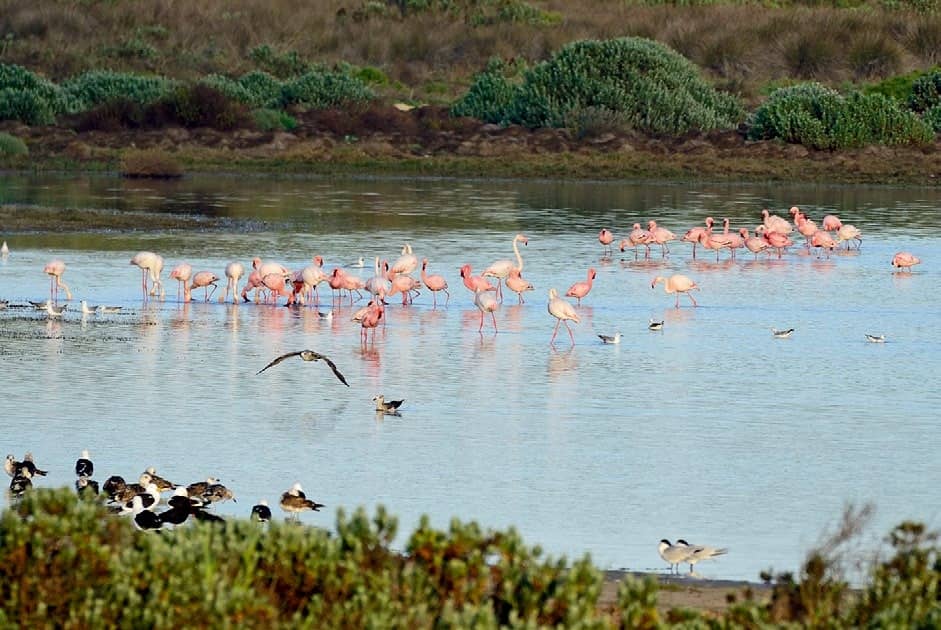
Diese Geschichte stammt aus der January - February 2021-Ausgabe von African Birdlife.
Abonnieren Sie Magzter GOLD, um auf Tausende kuratierter Premium-Geschichten und über 9.000 Zeitschriften und Zeitungen zuzugreifen.
Sie sind bereits Abonnent? Anmelden
WEITERE GESCHICHTEN VON African Birdlife
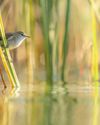
African Birdlife
stories begin at EYE LEVEL
ALTHOUGH I HAVE been taking photographs since 1998, it wasn't until 2019 that my hobby evolved into a serious pursuit. That's when I began to see photography not just as a means of capturing a moment, but as a form of art - something that can stir emotion, spark wonder and tell a deeper story.
1 mins
July/August 2025
African Birdlife
ALBERT the Wandering Albatross
Ahoy, shipmates, grab a pew and let me spin my yarn.
3 mins
July/August 2025
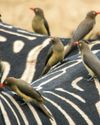
African Birdlife
I'll be back...
Southern African populations of oxpeckers were hit by triple hammer blows during the late 19th century and much of the 20th.
2 mins
July/August 2025

African Birdlife
BINDO and SABAP2
A match made in data science
2 mins
July/August 2025
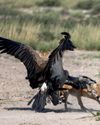
African Birdlife
PREDATORS of the pan
As regular visitors to Mabuasehube in the Botswanan sector of the Kgalagadi Transfrontier Park, we have often seen vulture feathers lying in the area of the waterhole at Mpayathutlwa Pan and have frequently observed a pair of black-backed jackals in the vicinity.
1 min
July/August 2025
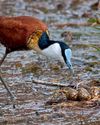
African Birdlife
Jacana & the egg thief
While on a photo expedition in the Richtersveld National Park with my brother Peter, we were watching one particular African Jacana on the Gariep River.
2 mins
July/August 2025
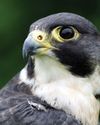
African Birdlife
A STRIPE FOR ANY OTHER PURPOSE?
Uncovering the adaptive complexities of falcons' malar stripes
2 mins
July/August 2025
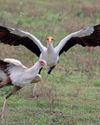
African Birdlife
grassland GLADIATORS
The Secretarybird is a highly soughtafter species for most birders on their first visit to Africa. It looks so strange, like a cross between a stork and an eagle. Even though it is widespread, occurring in almost any suitable habitat (grassland, open savanna and Karoo shrubland), it's generally uncommon.
1 mins
July/August 2025

African Birdlife
SECRETS SKY
Jessica Wilmot is the driving force behind BirdLife South Africa's Flyway and Migrants Project, working across borders to safeguard some of the planet's most threatened species and habitats. Supporting BirdLife International's East Atlantic Flyway Initiative, Jessica is at the heart of efforts to keep our skies alive with birds, particularly the enigmatic European Roller, which is her current focus and passion.
6 mins
July/August 2025
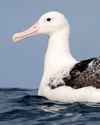
African Birdlife
Southern SIGHTINGS
Autumn is generally known to be quieter in terms of rarities across southern Africa, but the review period still had a few surprises for us, including a new species for the subregion. As always, none of the records included here have been adjudicated by any of the subregion's Rarities Committees.
3 mins
July/August 2025
Translate
Change font size
